Burma Link | March 20, 2014
The Back Pack Health Worker Team (BPHWT) is a multi-ethnic community-based organisation that has been providing primary healthcare in the conflict and rural areas of Burma for over 15 years. The teams deliver a wide range of primary healthcare programs to a target population of over 200,000 internally displaced persons (IDPs) and other vulnerable community members who would otherwise have no access to healthcare. The BPHWT encourages and employs a long-term sustainable community-managed approach where health services are requested by communities and the health workers are chosen by, live in, and work for their respective communities. The BPHWT’s work is highly organised and they work in close cooperation with a range of other health actors and ethnic organisations based on the border and inside Burma. Encouraged by recent changes and looking into a democratic Federal Union of Burma in the future, the BPHWT is currently discussing with other health CBOs and ethnic health organisations to converge the government healthcare system with the extensive border-based primary healthcare system. Despite these positive developments, progress is slow and the situation in Burma’s rural areas remains dire. Even if durable sustainable peace is achieved, the BPHWT will need to continue the provision of health services ‘for at least another ten years’. While BPHWT’s health workers continue to risk their lives in providing primary health care for Burma’s most vulnerable people, one of the most significant challenges they have recently had to tackle is one sadly faced by many cross-border and border-based aid organisations: The donors are increasingly abandoning the border and moving to Yangon. In this in-depth interview, Saw Win Kyaw, the Director of the BPHWT, talks about the BPHWT’s activities, the convergence plans, their dreams and goals, fears and roadblocks, as well as the challenges and difficulties faced by jungle medics in Burma’s conflict zones.
Introducing the Back Pack Health Worker Team
The Back Pack Health Worker Team was founded in 1998 and currently our program design is one Back Pack team working with a target population of 2,000 people. When we started we only had 32 back pack teams and currently we have 95 backpack teams and more than 300 health workers linked to a community network of over 1,000 village health workers and traditional birth attendants. Our reach is now more than 200,000 people. We mainly serve people in the conflict areas and target the most vulnerable populations.
In one target area, there is a total of 13 to 18 health workers; three health workers who travel in the area, five village health workers and five to ten traditional birth attendants. They work together in one village track. Every six months they have to send their report to the main office.
Depending on the area, some teams serve two or three villages while other teams serve more than ten villages, especially in Papun area where the population is not very big and the villages are small, some with only ten, twelve, or twenty households. We also work together with village health workers. Village health workers receive a three month-training and they live in their own village and take care of their own village. That is a long term sustainable way to look after the health of villagers.
Our office is here in Mae Sot. All of our programs are inside Burma, inside conflict areas. Currently we implement our health program in some Kachin, Palaung, and Shan areas. We have many teams in Karenni areas and in the Karen State, and also in Mon, Arakan, and Chin areas. In Karen State, including the Tenasserim Division, we have about 50 teams. Then we have more than 40 teams in other ethnic areas.
Programs and project cycle
We have three main programs: The Medical Care Program (MCP), Community Health Education and Prevention Program (CHEPP), and Maternal and Child Healthcare Program (MCHP).
In the Medical Care Program, our health workers treat six main diseases: Malaria, acute respiratory infection, diarrhea, dysentery, worm infestation, and anemia. We send essential medicine to our target areas from Thailand every six months. Our workers come get the medicine from the border and take it back to their own respective areas. We also provide the trauma protocol and guidelines that we base on Burmese Border Guidelines that are based on the WHO guide. Currently for malaria protocol we use the same manual with the SMRU, Shoklo Malaria Research Unit. We work very closely together with them and we call trainers from SMRU to train our health workers.
The Community Health Education and Prevention Program has a preventive focus. We do a school health program whereby we provide hygiene kits, give health education to school children and also we provide vitamin A and medicine to the children. We also implement a water and sanitation program, providing community latrines, school latrines, and safe water to the communities. We provide them with water pipes. We also give health education to community members through discussions together with our health workers and the villagers. We call it participatory learning action. We find out what kind of problems they have and how they can solve the problems by themselves.
Our third main program is the Maternal and Child Healthcare Program. We train traditional birth attendants who do home deliveries and also they provide three contraceptive methods for women: Condoms, oral pills, and also depending on the situation they provide Depo injections. Depending on our area, more than 80% of deliveries are home deliveries. Because they are far away from a clinic and also they are poor and they can’t travel to the clinic. That’s why we allow home deliveries. We also provide maternity kits and delivery kits, and depending on our area’s situation, we take delivery records of the newborn children. In our areas most people don’t have any ID card or any legal status. We started collecting this data so that maybe we can prevent our children to become stateless persons.
Our health workers also collect data and they report back to their field area. Normally every six months we call a meeting here in Mae Sot where they bring a hard copy of their reports. Here we analyse the data again, and we have a workshop and a meeting and then we decide what they should do for the next six months. Then our field in charge staff go back to their field areas, meet with the health workers, and have a field workshop. Then the field staff go back to their respective village tracks and they implement the program. After six months they come back to their field area, meet with field in charge, and do a field meeting for what they need and what they need to do for the next six months. And then that field in charge comes back to our center here and depending on their proposal, we discuss, do the workshop, and decide what to do in the meeting. That is our project cycle.
Training – Cooperation and commitment to ongoing development
We have several kinds of training. Community health worker training is basic medical training that lasts for six months with an additional three month placement at Mae Tao Clinic. Level two is medic training for 12 months, and level three is health assistant training that takes two years to complete. With level two and level three we mostly cooperate with Mae Tao Clinic. The basic medical training our Back Pack team coordinates with local health departments, some with Karenni Department of Health and Welfare, some with Shan health organisations, and some are Mon health department. The health curriculum is standardised and prepared together with Back Pack, International Rescue Committee (IRC), and Mae Tao Clinic.
Then we have the village health worker training that lasts for three months. The village chooses one person and they send the person to our Back Pack team and our Back Pack team trains the person. Village health workers have to take responsibility for their own village and make a commitment to live in their own village for a long time. We also conduct training in the communities. We do first aid training for the villagers and school teachers in our target areas, with a special focus on injury cases because there is a lot of fighting in our areas. We also train first aid for diarrhea and high fever, and we train them in how to prevent malaria.
Then we train traditional birth attendants. It is only a six week training because they are already experienced as traditional birth attendants in their own village. They look after the pregnant women, do home deliveries, and provide contraceptive methods for women.
We do refresher courses with our health workers. We call most of our health workers who have finished at least the community health worker training and have experience at least two years. We call them here for the refresher course. We also send some of our health workers to train in Mae Tao Clinic when they have the midwife training there.
Currently all of our health workers are volunteers. For one backpack team we have three health workers and we provide them with only 1,000 baht per month. For the village health workers until now we have nothing to provide. And also the traditional birth attendant for six months we can only provide 300 baht.
Back Pack teams risking prison and death
For outsiders a lot of our situations look like challenges but for us they are just normal. Most of our health workers who come here have to travel in the jungle for one or two weeks, some one or two days and some for ten days. On the way, they have to avoid the military government troops. And before the ceasefire situation, if it was the government operation time they had to wait in some village. Depending on the conditions, sometimes they need to wait for two or three days, sometimes four or five days.
All of our working areas are non-state actor areas. That’s why we are working with the ethnic organisations. Sometimes we ask help for carrying our medicine. Sometimes we ask about information about which area is safe and which area is not safe. We have to ask a lot of questions. Currently with the temporary ceasefire conditions, our health workers can travel more freely than before the ceasefire, but still not legally. That’s why it is difficult for our health workers. We are not sure is the government side will ever recognise our health activities. That’s also a difficulty for us.
In November 2011, two of our health workers were arrested by the government troops. At the time they were working in their area and one person came and asked for health workers. His wife was in delivery and had hemorrhage. Please come and take care of my wife, he said. So two health workers, one lady and one man followed the man. Unluckily, they met with government military troops on the way. They stopped and arrested them. So they couldn’t take care of the woman and she died. The health workers were taken back to the Burmese military camp LIB 19 in Papun.
We tried to get them freed. One thing is that a lot of the local village track leaders, they followed up and they asked about the two health workers. Secondly, at the time the KNU and military government had also started to discuss the ceasefire process. And the third thing is that in our main office, we sent a letter to some ambassadors. We also sent a letter to ICRC, to Aung San Suu Kyi, and to the President.
Luckily they were released. They were arrested for a total of three months in that military camp. That is another thing that we are so scared about when working in our area.
In the rainy season the water is flooding and the landscape is also dangerous to them. We have experienced two of our health workers fall down to the stream in Karenni area and they were lost. Some of our health workers stepped on landmines and were injured. That also makes it difficult to work in our areas. But for us, we have seen those things many times and for us it is normal conditions.
During our working time, nine of our health workers have died. In the Karen State, in my working area two health workers were shot by the government troops. One of our workers died after stepping on a landmine in northern Taungoo area. Last year one of our health workers in the Kachin State had a miscarriage. There was a lot of fighting and she had to move around from one place to another a lot. That’s why she had a miscarriage. I’m so sad for her. Currently they are trying to help some IDPs in those areas. How dangerous it is I don’t know, I’m not sure. That is normal for us.
Cross-border aid as crucial as ever
Currently, most donors are moving to Yangon. And we are most or all of the cross-border aid. So they have moved to Yangon and they are not taking care of the real vulnerable persons. The budget here is very, very much less and not enough for our estimated budget plan. We are not sure what to cut down. Currently we have stopped building water pipes and latrines because we don’t have enough funds. But no matter what, we should continue to provide our three main programs for the remote ethnic areas.
Our working areas are very remote areas and also most of our working areas are ethnic areas. So if the government or any NGO sends help through Yangon, they are very far away and then they also send their own staff there. One big barrier for that is lack of trust and common language. We have experience for more than ten years so we know how to deal with the communities and how to develop health in our areas. International donors should provide for the community based health system. Not directly come and provide their own system. Because when their project finishes and they go back there is nothing in that area anymore. That’s why they should provide for a community based health system.
Currently they should provide both sides; through the cross-border aid and at the same time through Yangon. Not only one way. The donors should understand that they need to continue to provide cross-border aid and also comprehensive primary health care activity, meaning community based health activity. They need to provide not only through Yangon but also cross-border aid.
Convergence plans – Uncertainty and glimmers of hope
Currently it is the temporary ceasefire period. We try to plan and adapt to the changing situation. We try to plan for the future of Burma, for a Federal health system. We plan but in the current situation we cannot predict even to the next assessment, to the next year. It is very difficult.
In our current working areas in Kachin and Shan States they are still fighting a lot and there are a lot of offensives. Also in Palaung areas. Another problem in the Karen State is land grabbing. So although the guns are not firing they do have a lot of land grabbing. The villagers in our Karen communities are so scared for the situation. It can also happen that they can go back to fighting again. I’m also very scared for that. For our organisation I’m not so worried because now we have a lot of experience, we know how to help.
Currently we have the Health Convergence Core Group (HCCG). In the HCCG we try to find out how we can converge and discuss with the government. Here we have four CBOs and four ethnic health organisations (EHOs) who are working together. On one side we have the EHOs and the border-based CBOs and on the other side the state health or the union health department. In the current situation we have three or four steps for convergence.
One is program convergence, meaning some kind of curriculum standardisation and doing some programs together with both sides. Second thing is system, managing the health system together and doing some activities together. We also need to find common ground on the policy level. So far we have never discussed about that. The last thing is structure level. The ethnic health organisations have a health structure which is decentralized and the government side also has a structure which is centralized. In the current situation we should start moving both structures parallel to each other and one day we can move one way together. One day means when both sides have a genuine ceasefire, or when, as we hope, we have a Federal Union with a decentralized, community-based health, structure.
We have discussed with the state health director many times. Not only our Back Pack team but we are working together with the Karen Department of Health and Welfare. Currently we have one convergence activity in Hpa-an where we have a Back Pack team and we try to do the auxiliary midwife training (AMW). The state health director is very happy with our midwife training and he also came and encouraged our staff. When the training finishes the auxiliary midwives go back and work in their own villages. We provide them with maternity kits, medicine and some medical materials. They work together with the government midwives, and they need to send their data and ask the government side for delivery records. We also took a health needs assessment survey in a governmental controlled area in 2013. Those are our convergence activities.
We have also met once with the Union Deputy Health Minister, together with the Karen Department of Health and Welfare. We discussed with her about health activities in our area, about what we need and how they should recognise our health workers. She really appreciated our AMW training in Hpa-an and said that in the whole country they need more than 6,000 public health supervisors but they can train only 200 every year. So the government side, they don’t have enough health workers.
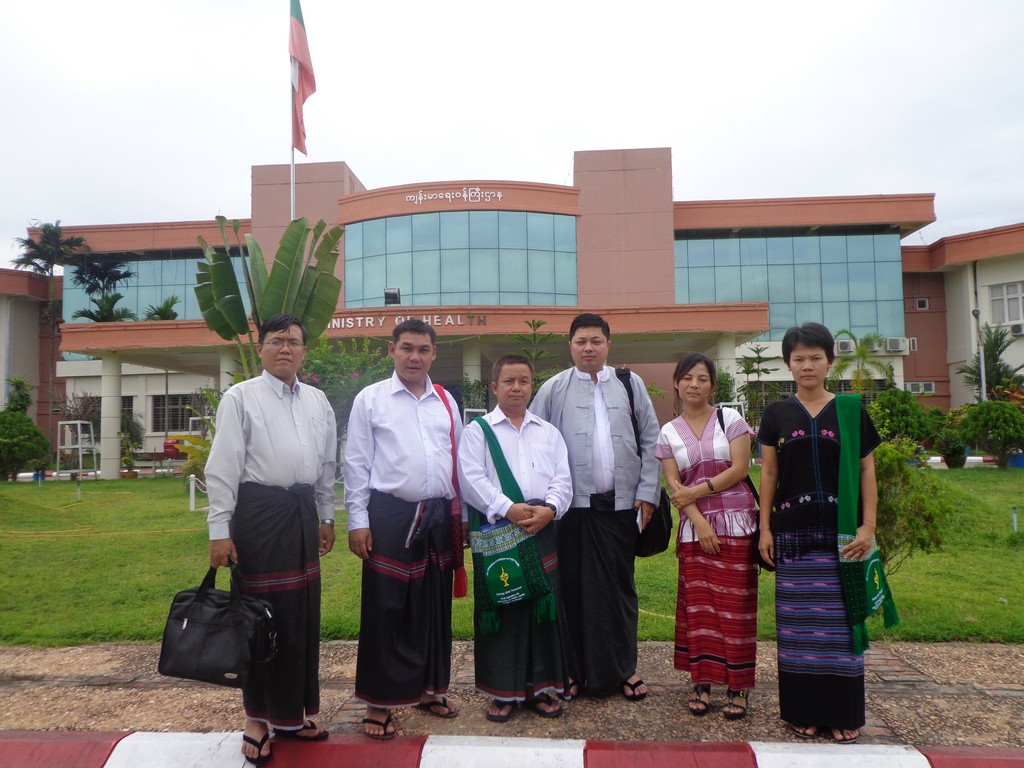
Border based ethnic health organizations and CBOs met with Union level ministry of health in Naypyi Daw in 2013. (Photo: BPHWT)
Dreams of comprehensive healthcare and decentralisation
In the current situation, we still have to take responsibility for treating the patients in our area. We know that if one day the government can take responsibility for everything, then we will do only health education. But in the current situation we have to take responsibility for our health programs for at least another ten years. In the future we want to focus more on village health workers for them to take responsibility for their own village.
Currently we are learning about the government primary health care structure. At the primary level, the government has structure for a target population of 20,000 population in what they call rural health centers. In the rural health centre they have only about 13 to 15 health staff. They have one Health Administrator (HA), one Public Health Supervisor II (GII), one Lady Health Visitor (LHV), and one Midwife. In a rural health centre, they have 4 to 6 rural health sub-centers. In a rural health sub-center, they have one midwife, and one Public Health Supervisor II. Their plan is to have one Auxiliary Midwife in each village; however in reality, there is not one Auxiliary Midwife in each village. This staffing is not enough in our areas. That is not how we understand it should be. Currently, in our activity, for 2,000 population we have 13 health workers or more accessible to the community. So that is different and we need to change the government’s rural health centres. They need to have more human resources, more health staff. We want to suggest and try to move towards the dream of having at least 10 to 13 health workers in the rural health centre with 2,000 target population. That is how we work on our side and if possible we also want government side to work like that. That is our dream.
Another thing, currently not yet possible, is the decentralisation of the health system, decentralisation of power. We are trying to change that. We need decentralisation. We need to deal with that with the government and communicate, compromise, and negotiate. For the health system, we want a federal health system, which means the decentralisation of the health program. We advocate and try, because currently the government structure is not enough and it is not accessible to all the communities. That is something we really know and we really experience in our working areas. We want to change that but until now we are not sure how to deal with the government’s side.
End notes:
Spurred by ongoing peace negotiations in many ethnic areas in Burma, the BPHWT, other health CBOs and ethnic health organisations (EHOs) have been working together to converge the extensive community-based/border-managed health system with the Burma government’s health system in order to provide better health care, access more of the population, improve health system and policy, and gain government recognition of community-based/border-managed health programs and workers. Over the past decade, the government of Burma has spent less than 3% of its national budget annually on healthcare and as a result, the healthcare system is utterly inadequate, particularly in rural ethnic areas. In contrast, over the last twenty years, international aid agencies and donors have invested heavily and successfully in building the capacity and network of the community-based/border-managed health system, which includes 114 clinics, 105 mobile and Back Pack teams, 51 specialized service centers, and over 4,000 trained local health workers inside eastern Burma. This network provides critical health services to a target population of over 380,000 vulnerable people who have been affected by decades of protracted conflict and live in rural remote areas of Burma. Regrettably, while these vulnerable populations remain in desperate need of assistance, recent funding cuts on the border are forming a prominent obstacle for this important work.
This story is based on Saw Win Kyaw’s voice as he tells Burma Link about the work of Back Pack Health Worker Team. You can read Saw Win Kyaw’s personal story here.

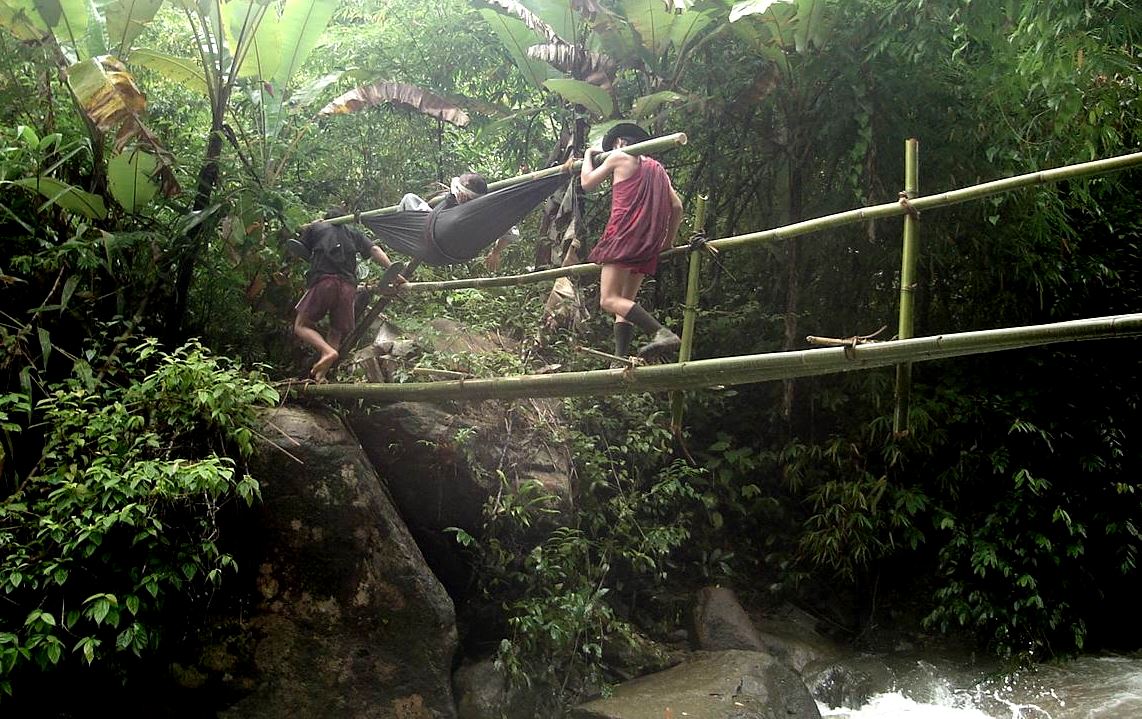
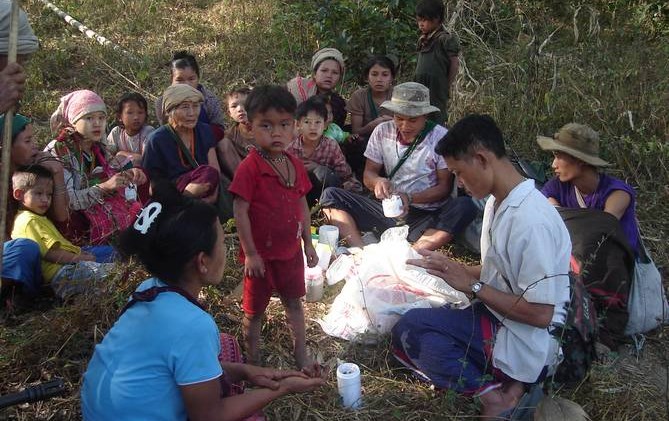
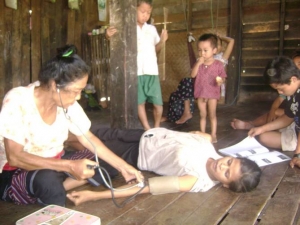
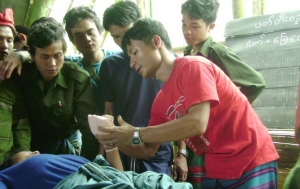
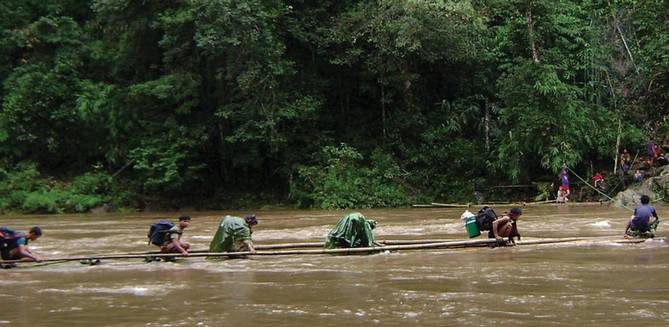
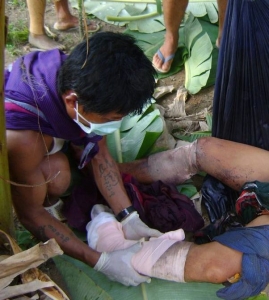
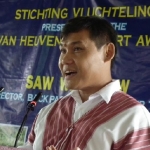
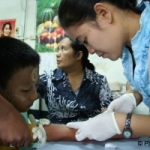
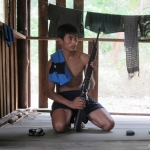
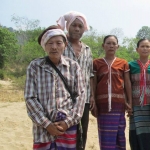

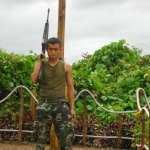
It would be great if the date of your articles could be more prominent. Thank you!
Thank you for your comment Miles! Some of the stories from 1-2 years back are indeed missing the date from the top, which has been fixed for this story now. Thank you for helping us improve our site!